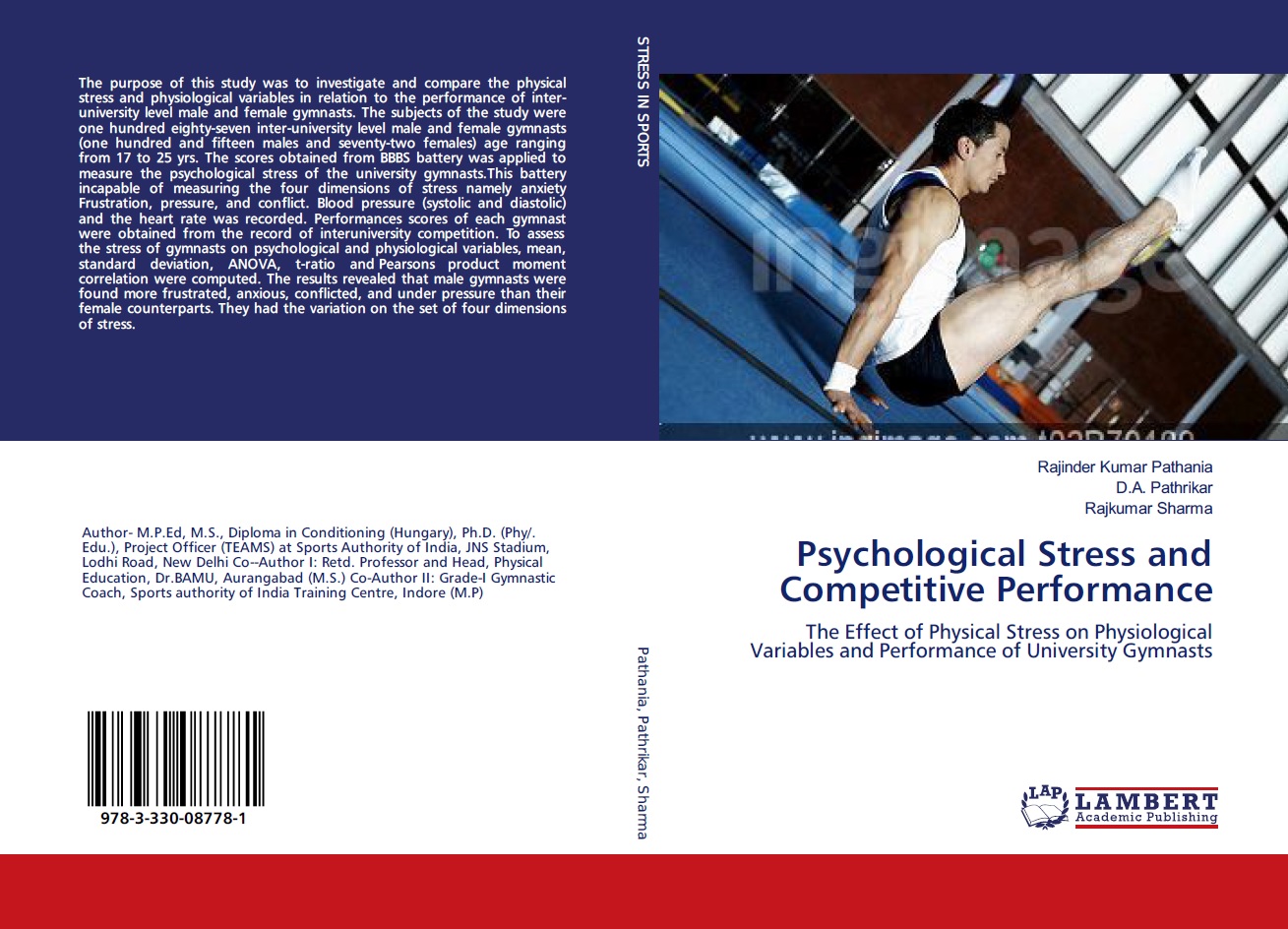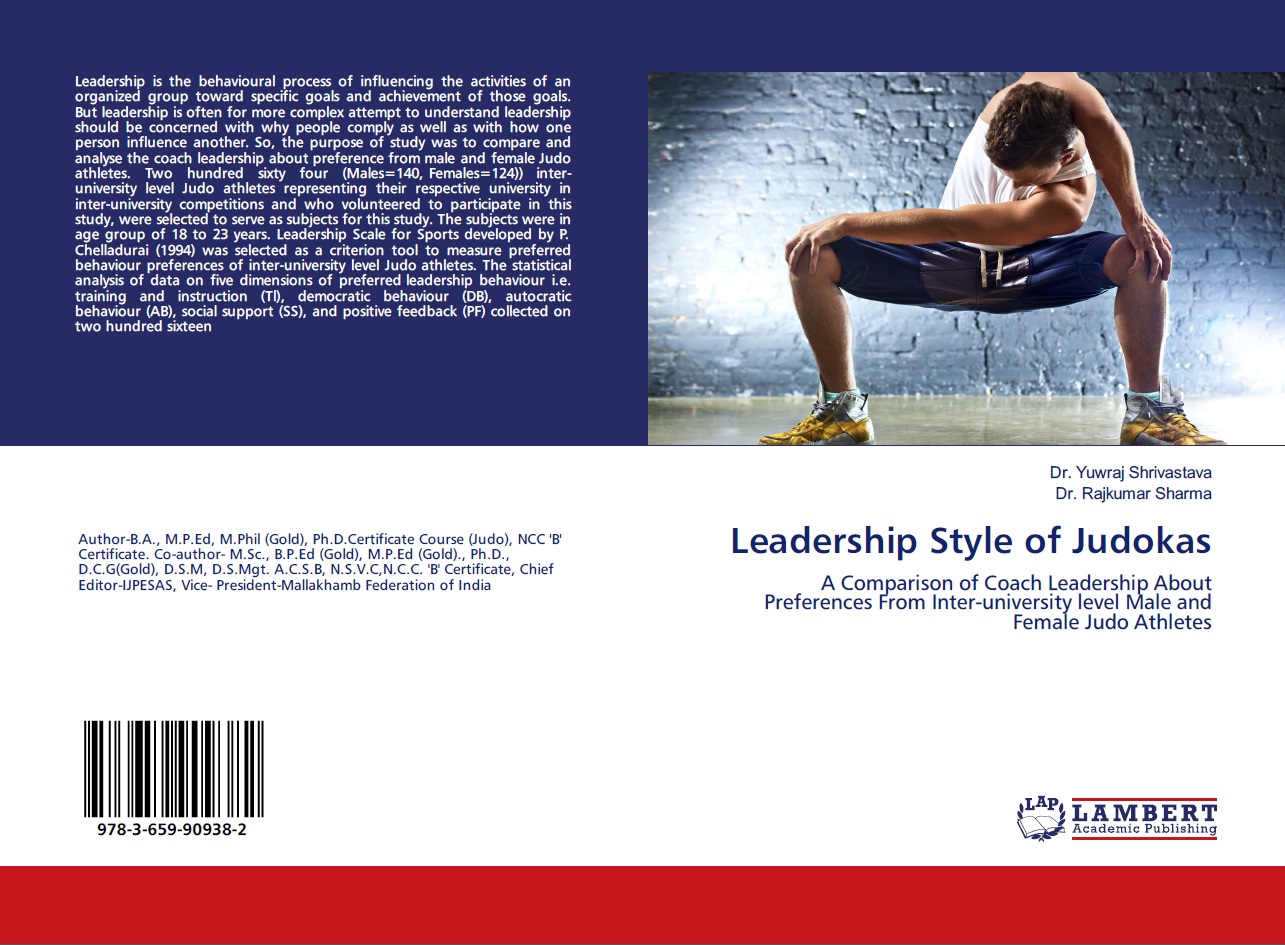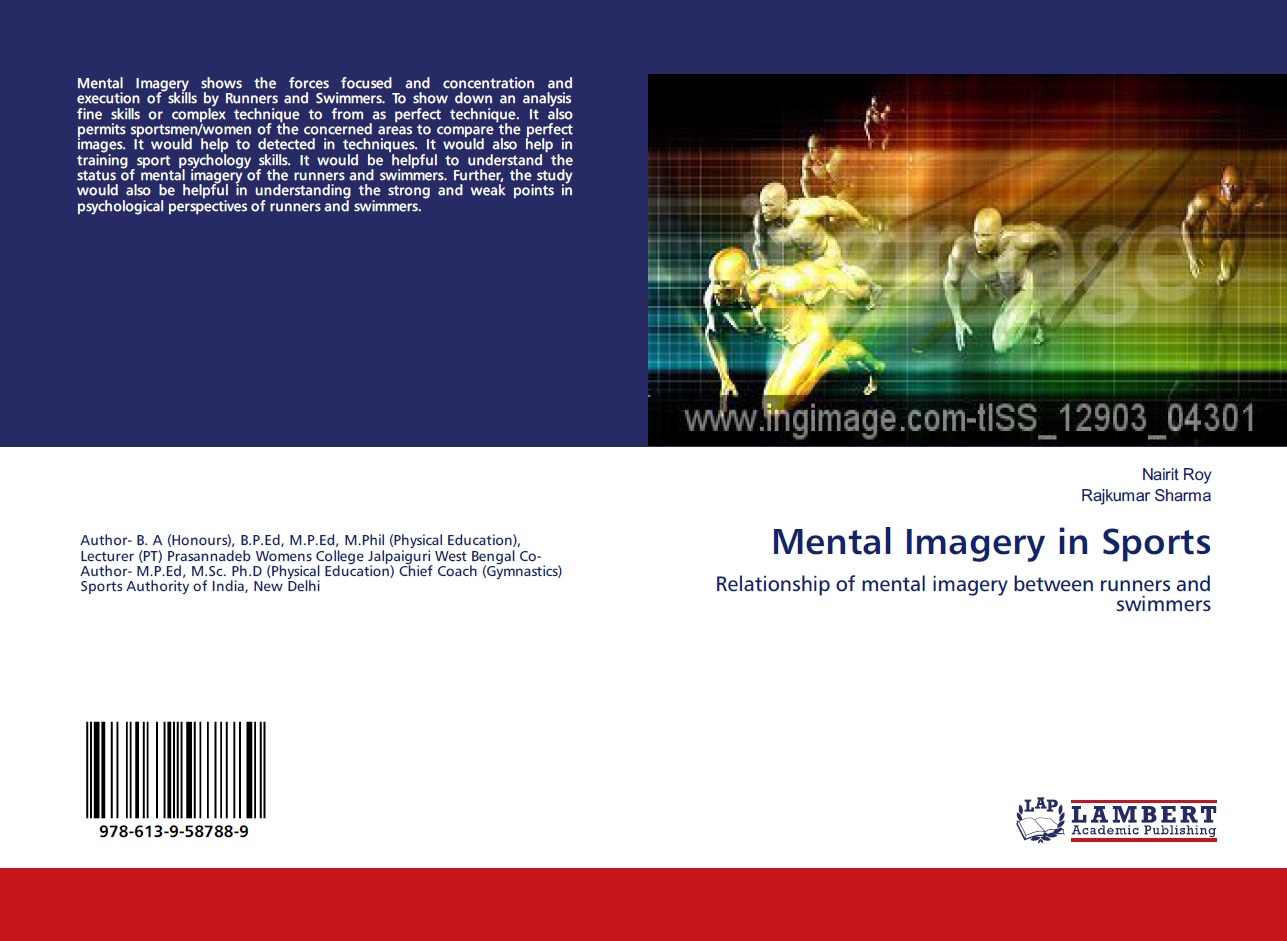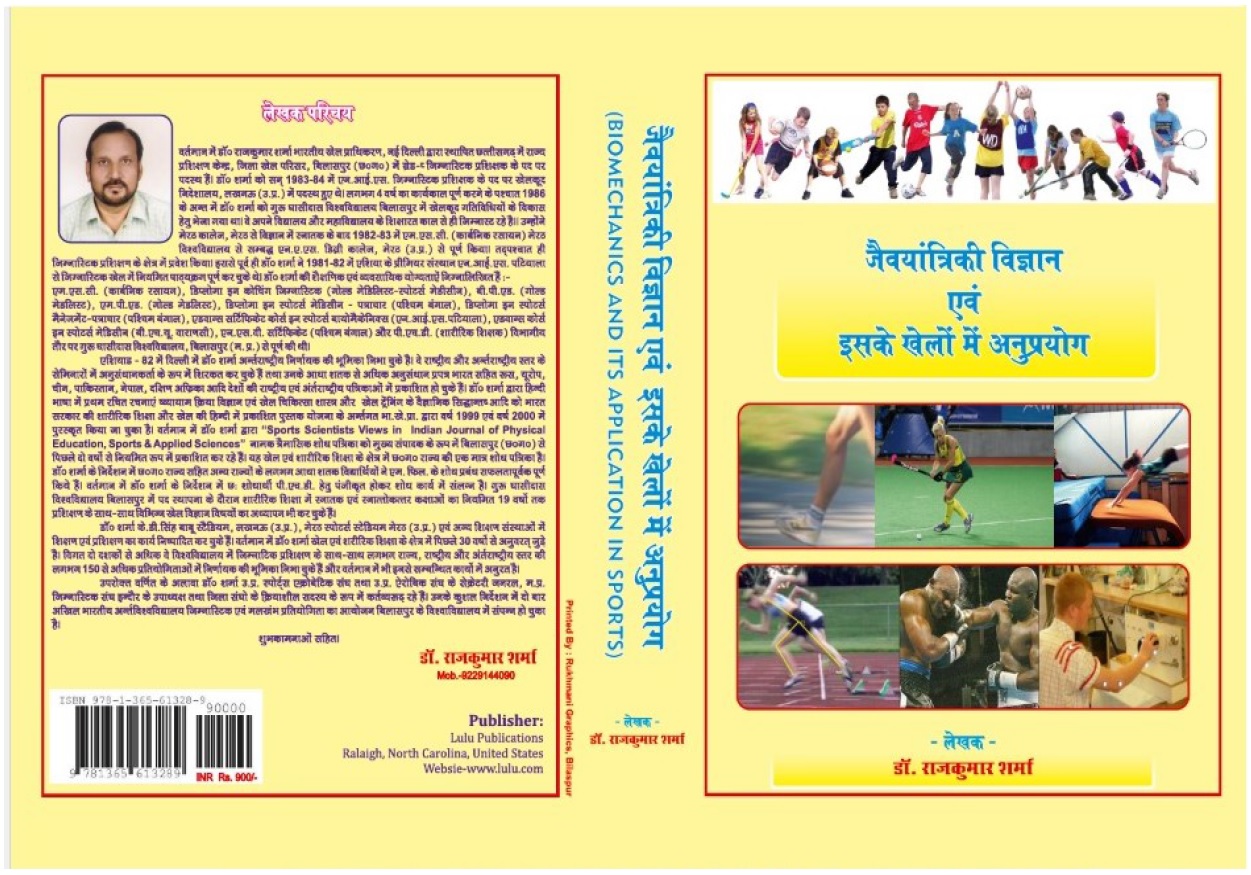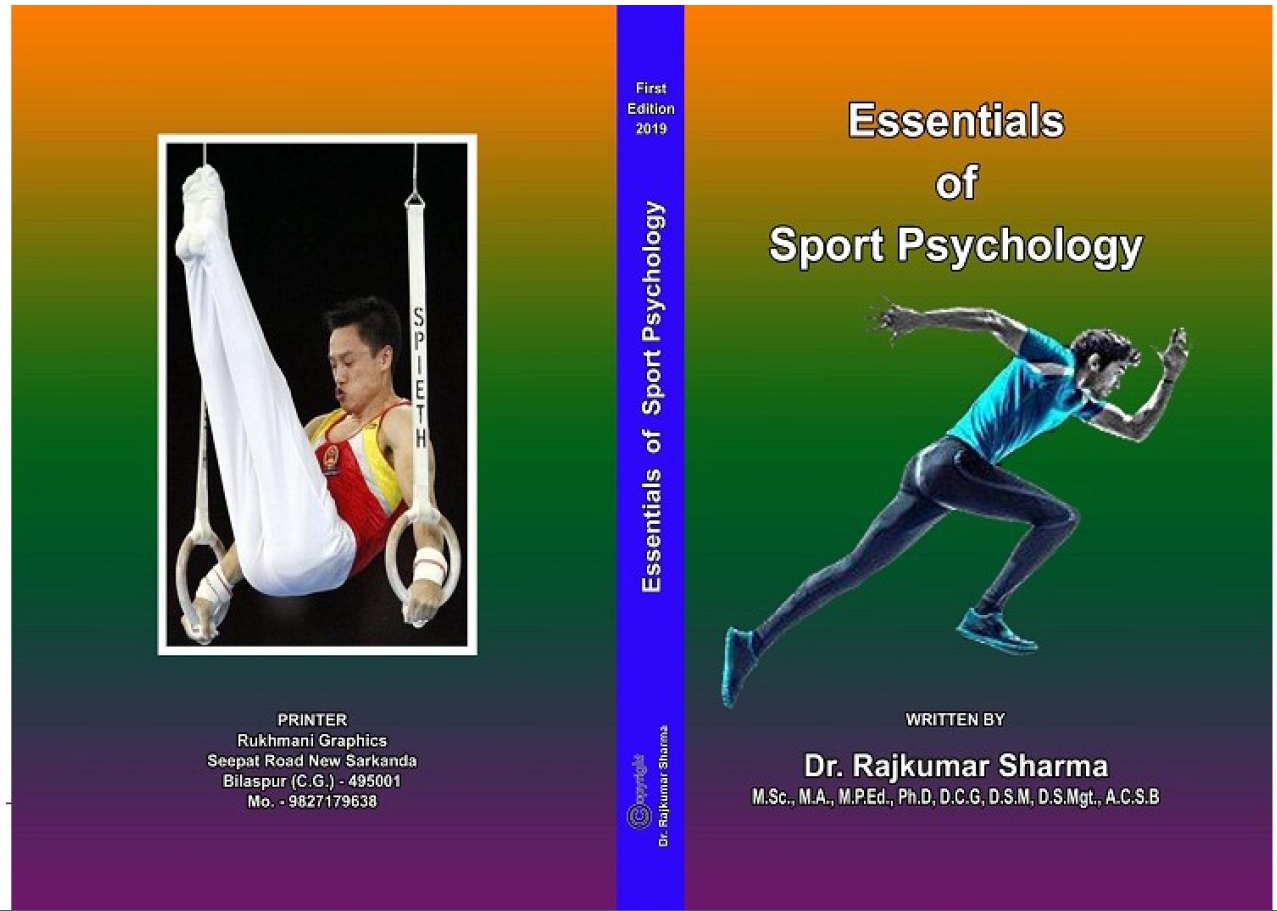| S.No. | Total View Count | Title of Manuscript | Page No | Download/ PDF |
|---|---|---|---|---|
| 1 | PSYCHOLOGICAL SKILLS AS A PREDICTOR OF PERFORMANCE IN SPRINTING OF INDIAN MALE AND FEMALE SPRINTERS Author: Prashnajeet Chatterjee and Dr, Rajkumar Sharma | 20-28 |  9 9 |
Article info
doi no.: 05-2016-44975451,
DOI Link :: https://doi-ds.org/doilink/02.2022-38583595/IJPESAS/05.2016-44975451/V12/I1/A3
AFFILIATIONS:
- Sports Officer in G.S. College of Commerce & Economics, Jabalpur affiliated to Rani Durgavati Vishwavidyalaya Jabalpur (M.P.)
- Former Chief Coach, Sports Authority iof India, Ministry of Youth Welfare and Sports Department, New Delhi
The purpose of the study was to assess the psychological skills as a predictor of sprinting performance of Indian male and female athletes. A purposive sample of one hundred and thirty male=59 and female=71 National level (sprinters) ,who participated in 72nd All India Inter-university Athletic Meet (M/W) held at Bangalore and 18th Federation Cup National Athletics Championship held at NIS Motibagh ,Patiala and 54th National Inter State Athletics Championship held at PAC Ground, Lucknow (U.P.),and volunteered to be the subjects of study. The Athlete Coping Scale Invertory-28 (Smith et al. 1995) is a sport-specific scale consisting of 28 items that measures the psychological characteristics of athletes on seven subscales; coping with adversity, peaking under pressure, goal setting/mental preparation, concentration, freedom from worry, confidence and achievement motivation, and coach-ability was employed To investigate the psychological skills on seven sub-scales for National level male and female Sprinters, means, standard deviations Multiple Correlation and Regression analysis were computed. The results of investigation revealed that the selected psychological skills do not predict 100 meter sprinting performance of male sprinters, while these psychological skills do not predict 100 meter sprinting performance of female sprinters
Keywords: Male, Female, Predictability, Sprinting performance, Athletes.
References
Ajeesh, P.T. (2013). A Study on Self Esteem among Men and Women Volleyball Players. International Journal of Behavioral Social and Movement Sciences, 2 (3), 56-63.
Asma, Yadegarlu., Rahim, Najafzadeh Mohammad and Hamid, Jnani.(2014). The Relationship between Goal Setting and Participation Motivation of Iranian Women's Futsal League Players in Sport Activities. Indian Journal of Fundamental and Applied Life Sciences, 4 (3), 1440-1447.
Boroujeni , Shahzad Tahmasebi and Ghaheri, Banafsheh.(2011). “The Effect of Motivational Self-talk on Reaction Time. Social and Behavioral Sciences, 29, 606 – 610.
Bornemann (2000), Tennis Course Volume 2, Lesson and Training, Baron Educational, Jerman
Branden, N.(2011). “The Psychology of Self-esteem. New York: Bantam, 1969 cited in Parisa Rahmani, The Relationship between Self-esteem, Achievement Goals and Academic Achievement among the Primary school Students. presented in International Conference on Education and Educational Psychology, Proceeding - Social and Behavioral Sciences, 29, 803 – 808.
Baumeister, et.al.(2003). Does High Self-esteem Cause Better Performance, Interpersonal Success, Happiness, or Healthier Lifestyles?. Psychological Science in The Public Health, 4 (1), 112-119.
Cale, Andrew. (1991). Goal Setting, Multidimensional Anxiety and Performance. Unpublished Doctoral dissertation, Loughborough University. ,
Cash, Erin (2009). Motivation and Goal-Setting in College Athletes. (Unpublished Doctoral Dissertation, Retrieved from etd-04032009-124054.
Chin, Weiman R. (2006). The Role of Impression Management in Goal Setting. .Unpublished Master’s Thesis, University of Waterloo Ontario, Canada.
Carrozza, Frank. (2013). Coach-ability – What is it, and do I have it?. NSCAA Soccer Journal, 56 ( 4), 64.
Gyorgy, Manuela and moldovan, Traian (2013). “Self Esteem and Coping Strategies in Team Sport” Academica Science Journal. 2 (3), 41-56.
Gasic-Pavisic, S., Joksimovic S. & Janjetovic D.(2010). General Self-esteem and Locus of Control of Young Sportsmen. A Project of Education for knowledge-based society (2006-2010), Institute for Educational Research, Belgrade, Ministry for Science and Environmental Protection Republic of Serbia. 385-399.
Goldstein, E.B.(1994). Psychology: Pacific Grove, California: Brooks & Cole Publishing Company.
Gibson, Alan St. C. and Foster, Carl.(2007). The Role of Self-Talk in the Awareness of Physiological State and Physical Performance. Sports Medicine, 37 (12), 1029-1044.
Gould, et.al. (1999). Factors Affecting Olympic Performance: Perceptions of Athletes and Coaches from more and Less Successful Teams. The Sport Psychologist, 13, 371-394.
Gould, D., Eklund, R.C., & Jackson, S.(1992). Coping Strategies used by more versus less Successful Olympic Wrestlers. Research Quarterly for Exercise and Sport, 64, 83-93.
Heinmiller, Kathryn C.(2001). The Relationship between Self-esteem of Females and Participation in College Athletics. Unpublished Master’s Thesis, Michigan State University.
Hatzigeorgiadis, et.al. (2009). Mechanisms Underlying the Self-talk–Performance Relationship: The Effects of Motivational Self-talk on Self-confidence and Anxiety. Psychology of Sport and Exercise, 10, 186–192
Jayashree, Acharya., Amina S and Shailaja, Mohan(2009). Gender based Analysis of Sport Goal Orientation, Coping Skills and Participation Motivation of Athletes in Kerala. The 12thISSP World Congress of Sport Psychology Marrakesh - June 17- 21.
Kolayis, M. H., and Sari, Ihsan (2011). Anxiety, Self-esteem and Competition Ranking of Judokas. Science of Marital Arts, 7(1), 11-15.
Khan, Kabir Shah and Ali, Dilshad.(2011). Assessment of Self-Esteem among Elite Male and Female Indian Universities Wrestlers –A Comparative Analysis. Variorum, Multi- Disciplinary e-Research Journal, 2 (1), 1-4.
Khan, Z. S., and Ahmad, N. (2010). “Sports Achievement Motivation among Asian Players. AMASS Multilateral Research Journal, 2(2), 7-9.
Kosarkarjev, S., Adolescenci, V.V. and Starosti, Spolain. (2009). Self-esteem in Adolescent Basketball Players: Gender and Age Involvement. Kinesiologia Slovenica, 15 (1), 43–49.
Kahrovic, et.al. (2014). Effects of Self-talk Strategy in Mental Training of Athletes. Facta Universitatis, 12 ( 1), 51-58.
Lazarus, S. (1991). Emotion and adaptation. New York: Oxford University Press.
Mahoney, Michael J., Gabriel, Tyler J. & Perkins, Scott T.(1987). Psychological Skills and Exceptional Athletic Performance. The Sport Psychologist 1 (3), 181-199.
Martin, D., Carl, K., Lehnertz, K. (2000). Coaching manual. Connecting theory to practice. Komotini: ?lfavito.Smith, R.E. & Christensen, D.S. (1995). Psychological skills as predictors of performance and survival inprofessional baseball. Journal of Sport and Exercise Psychology, 17, 399-415
Naderi H, Rohani A, Tengku Aizan H., Jamaluddin S & Kumar, V. (2009). Creativity, age and gender as predictors of academic achievement among undergraduate students. Journal of American Science, 5(5), 101-112.
Omarsson, B. P. (2013). “Effects of Sport Participation on Adolescent Self-esteem and Body-Image: Differences in Gender and Types of Sports Explored”. Unpublished Bachelor thesis, Reykjavik University, Haskolinn.
Patterson, R.F. (1993). New Webster’s Dictionary. Miami: P.S.I & Associates, Inc.
Pascarella, E. T. & Smart, J. C.(1991). Impact of Intercollegiate Athletic Participation for African American and Caucasian Men: Some further Evidence. Journal of College Student Development, 32, 123-130.
Rahmani, Parisa (2011). The Relationship between Self-esteem, Achievement Goals and Academic Achievement among the Primary School Students” presented in International Conference on Education and Educational Psychology, Proceeding - Social and Behavioral Sciences, 29, 803 – 808.
Smith, R.E. (1980). A cognitive-affective approach to stress management training for
athletes.In C.H. Nadeau,W. Halliwell, K.M. Newell, & G.C. Roberts (Eds.),
Psychologyof motor behavior and sport-1979 (pp. 54-72). Champaign,IL: Human
Kinetics.
Smith, R.E. (1989a).Conceptualand statisticalissuesin researchinvolving multidimen-
sionaf anxiety scales.Journal of Sport & Exercise Psychology, 11, 452-45-l.
Smith, R.E. (1989b). Effects of coping skills training on generalized self-efficacy and
locus of control. Journal of Personality and Social Psychology, 56, 228-233.
Smith, et.al. (1995). Development and Validation of a Multidimensional Measure of Sports Specific Psychological Skills. The Athletic Coping Skills Inventory-28. Journal of Sports & Exercise Psychology, 17, 379-387
Thakur, Geeta (2014). Achievement Motivation : A Key Towards Success. .International Journal of Social Science and Humanities Research , 2 (3), 161-165,
Ucan, Y?lmaz & Caglayan, Nur (2012). Comparison of Self-esteem Scores of Individual and Team Sport Athletes and Non-athletes. Journal of Physical Education and Sport Sciences, 6 ( 3), 279-287.
Weinberg, R.S., & Gould, D.(2007). Foundations of sport and exercise psychology (4thed.). Champaign, Illinois: Human Kinetics. 2007
Williams, Jean M.(1993). Applied Sports Psychology : Personal Growth to Peak Performance . California : Mayfield Publishing Company.
Wann, D., & Church, B.(1998). A Method for Enhancing the Psychological Skills of Track and Field Athletes” Track coach, Retrieved from www.coachr.org/psychskills.htm.
Weinberg, R.S., & Gould, D.(2007). Foundations of sport and exercise psychology (4thed.). Champaign, Illinois: Human Kinetics.
Zetou, Eleni., Nikolaos, V. and Evaggelos, B. (2014). The Effect of Instructional Self-talk on Performance and Learning the Backstroke of Young Swimmers and on the Perceived Functions of it\. Journal of Physical Education and Sport, 14 (1), .27 – 35.
 admin@sportscientistsviews.com
admin@sportscientistsviews.com

